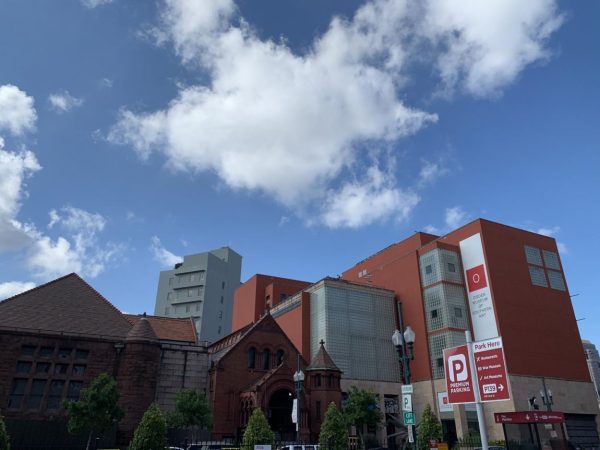
Located downtown within a corridor of museums including The National WWII Museum, the Museum of the Southern Jewish Experience and the Contemporary Arts Center, the Ogden Museum of Southern Art stands out as an important destination for New Orleans locals and tourists alike.
The Ogden was founded in 1999 following real estate developer and philanthropist Roger H. Ogden’s donation of over 600 works from his private collection. Since then, the collection has grown to include more than 4,000 paintings, drawings, photographs, sculptures and crafts, all associated in some way with the American South.
The museum highlights Southern art, but what does it mean to be “Southern”? There is first a geographic definition: the South, according to the U.S. federal government, includes the states of Alabama, Arkansas, Delaware, Florida, Georgia, Kentucky, Louisiana, Maryland, Mississippi, North Carolina, Oklahoma, South Carolina, Tennessee, Texas, Virginia and West Virginia, as well as the District of Columbia.
Although the geographical definition is largely useful, the works the Ogden displays feature a thematic unity that crosscuts geographical borders — the South is, after all, a social, economic, political and cultural construct. In the words of curator Bradley Sumrall, all items in the museum’s collection are “in, of or about the South.”
This second, thematic definition exists because of “that struggle to reconcile the past, often horrific, with the reality of the present and visions for the future,” Sumrall said in a written exchange.
“How do we reconcile the mythology of ‘moonlight and magnolias’ with the brutal reality and lasting legacy of genocide, slavery and secession? How do we dispel the antiquated stereotypes of the past that often define the South to the larger world, showing instead the contemporary reality of the region’s diversity and moments of excellence?” Sumrall said.
Sumrall hit on narrativity as a unifying element of Southern art. The impulse to tell stories may be most clearly exemplified in the robust Southern literary tradition, which includes such celebrated writers as Eudora Welty, William Faulkner, Zora Neale Hurston and Flannery O’Connor.
Storytelling seeps into the region’s music as well. Enslaved people — prohibited from reading or writing in most Southern states — used song to pass information down generationally and to communicate instructions for escape. The work, songs and spirituals sung on plantations served as the foundation for the distinctly Southern genres of gospel, blues and country.
The notion of place is another characteristic feature in the Southern art canon. This is not to say, however, that Southern art necessarily engages with regionality, or exaggerates local color to bring out its strangeness or otherness. While “regional” is a term outsiders apply to a work of art, the sense of place that permeates much of Southern art is in the raw material. While Southern artists of any worth may make characteristically vivid use of place as a subject and setting, their work transcends the boundaries or vernacular of a region.
It is here that works by self-taught artists, which are prominently featured at the Ogden, become particularly important. Sumrall named Clementine Hunter, Thornton Dial, Reverend Howard Finster, Sister Gertrude Morgan, Minnie Evans, Bill Traylor and Jimmy Lee Sudduth as exemplars of this category. Existing outside of any academic dialogue themselves, these visionary artists exert a strong influence on the trained artists that follow them. “Their work is art drawn from life itself — intuitive, honest and tied to the culture in which it was created,” Sumrall said.
Currently on display are exhibitions entitled “The Contemporary South,” “Southern Abstraction,” “NOCCA Past, Present, and Future: A 50th Anniversary Exhibition” and “Stories from New Orleans East: The Shape of a New Day,” as well as a sculpture exhibition on nearby Poydras Street. The latter two exhibitions are a testament to the Ogden’s commitment to engage and showcase the diversity of the New Orleans community. The museum offers free admission to college students on the first Friday of each month, so Tulanians are especially encouraged to deepen their engagement with the city within the steel and glass walls of the museum.
The Ogden also includes several event spaces that host participatory tours, guided meditations and concerts. You can find a monthly calendar of events here.
Originally founded upon a private donation, the Ogden exists now to correct a narrative, namely, the one that broadly excludes Southern, often self-taught artists from American art. Southern artists have not simply responded passively to national and global artistic movements; rather, they have excelled in and pioneered various movements.
The collection at the Ogden can provide Tulane University students with not only a greater appreciation of what it means to live, even transiently, in the American South, but with a greater understanding of artistic traditions that exceed geographical lines.


Leave a Comment